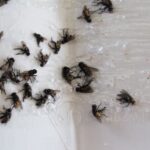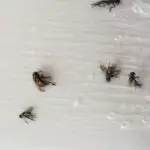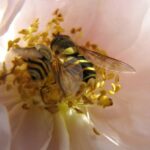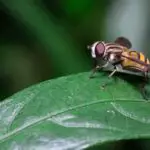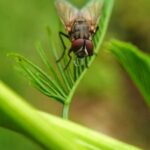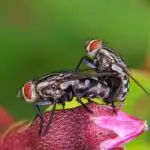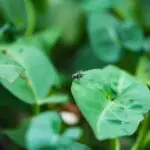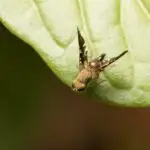Lantern Fly Invasion: Tackling the Buzz on Pest Management
Introduction to the Spotted Menace
Picture this: a bug, not much larger than a quarter, adorned with a tapestry of spots and streaks in hues of red, black, and white. This is the lantern fly, a species native to parts of China, Vietnam, and India, that has been creating quite the buzz—albeit of a concerning nature—in the pest control community. Why so? Because this flashy infiltrator has traveled far from its home turf, hitching rides on the global currents of trade to find itself in new territories where it’s less welcome guest and more a burgeoning pestilence.
The lantern fly, also known as Lycorma delicatula, first lit up the radar of entomologists and farmers alike when it swooped into the United States. Initially spotted in Pennsylvania in 2014, its presence has since been a major concern. Why are these pint-sized pilots so problematic? They have a sweet tooth for over 70 plant species, including grapes, orchard trees, and pines. Their insatiable appetite can lead to significant agricultural and ecological destruction, putting a spotlight on themselves not for their striking looks, but for their devastating impact.
Imagine rows of grapevines, the heart of a vineyard’s wine production, left withered and wasted in the wake of these insects’ feasting, like row upon row of desolate sticks against the sky. It’s real; it has happened. Home owners find swarms of lantern flies lounging on their beloved backyard trees, sapping away the life intended for the tree’s growth and harvest. The economic implications are nothing to turn up noses at either. Damages mount up, running into the millions, which certainly flips the script on the term “pest”.
But fear not, because there is hope on the horizon. The battle against the lantern fly involves community efforts and integrated pest management strategies that can help keep this pest in check. And while the fight rages on, stay tuned to learn more about treatment strategies and tactics that promise to even the playing field in our agricultural landscapes and backyards alike.
Beneath the increasing media spotlight and growing concerns, the invasion of the lantern fly might seem a near-apocalyptic scenario to some. Yet, it’s a clarion call for raised awareness and collective action. This is not just a bug; it’s a challenge to our agricultural safety nets and a test of our ability to adapt and overcome. The lantern fly isn’t just invading our lands; it’s capturing our full attention, demanding response and inviting innovation in the world of pest management.
In an effort to better acquaint our audience with this spotted specter, we present an exclusive visual of the lantern fly.  Let this image not symbolize despair, but the vigilant eye we must all turn towards the invasive species that threaten our ecosystems.
Let this image not symbolize despair, but the vigilant eye we must all turn towards the invasive species that threaten our ecosystems.
Understanding the Lantern Fly Lifecycle
Imagine a creature that starts its life as a stealthy egg before becoming a voracious feeder – that’s the lantern fly for you! Through each twist and turn of its development, this insect becomes an increasingly visible part of our environment, and not in a good way. So, let’s take a closer look at the stages of this pest’s life and understand when they’re most likely to come knocking on our doors.
Egg Stage: Our journey begins with the egg, where future generations of lantern flies lie in wait. These eggs are cunningly laid in discreet rows on flat surfaces, often resembling a smear of mud to the untrained eye. As the weather warms, usually around springtime, these eggs hatch into nymphs – the next act in this insect’s life drama.
Nymph Stage: After hatching, these tiny acrobats go through several instars, shedding their skin like a series of miniature costumes as they grow. Initially, they’re black with white spots; talk about gothic chic! As they progress, they adorn themselves with red, making a bold fashion statement while they jump from plant to plant, feeding all the while.

Adult Stage: It’s in the heat of summer that the plot thickens and nymphs transform into adults. With their distinctively patterned wings, adults are ready for their final rampage, feasting and flying from July to December. These pests have a particular fondness for grapes and hardwood, making vineyards and forests their prime targets.
One of the significant challenges in managing lantern flies is that they’re incredibly social creatures, gathering in large numbers and turning any affected area into an impromptu insect convention. For helpful tips on curbing the lantern fly invasion at home, here’s an insightful resource from Penn State University with practical advice grounded in understanding the lantern fly’s unique lifecycle.
Now that you know the enemy and their timeline, you’re better equipped to take action at the right time. Remember, your knowledge and timely response are crucial in keeping the lantern fly at bay and protecting our green spaces from these invasive guests.
Identifying the Threat: How to Recognize Lantern Flies
Have you heard the buzz? Lantern flies are not your ordinary backyard bug; they’re becoming notorious for their invasive antics. But before you join the fight against these winged foes, you’ve got to know the enemy. Let’s zoom in on what makes these pests stand out in a lineup.
Let’s paint a picture: You’re wandering in your garden and you spot a bug with a vibrant, patchwork cloak of red and black spots and stripes. Congratulations, you’ve just met a lantern fly! These distinctive critters sport a unique and colorful wing pattern that’s hard to miss when they’re not in their deceptively demure, slate-colored ‘off-duty’ attire.
These pests don’t play coy; they’re ‘social butterflies,’ so to speak, and you can often find them throwing their own garden parties en masse on trees, vines, and other plants. They’re particularly fond of the Tree of Heaven—quite the paradise for these troubling trespassers.

Not only do they have a distinct look, but their habits are also telltale signs. They’re daytime creatures and seem to have a fondness for heights, so if you see a bug scaling your trees or doing acrobatics on your fences during broad daylight, you might be hosting these uninvited guests.
Sticky situations are often a sign of the lantern fly’s presence; keep an eye out for a gooey substance known as honeydew on your plants or a mysterious sooty mold. That’s their mess after they’ve feasted on the sap of greenery around your homestead.
Remember, these critters are not just irritating invaders—they pose a real threat to our agriculture and gardens. Getting to know their patterns and hangouts is crucial. For a deeper dive into keeping these pests at bay, check out our article on effective strategies for a pest-free home. Stay vigilant and you just might save your slice of nature from becoming a lantern fly lounge!
The Economic and Ecological Impact of Lantern Flies
Imagine waking up to a backyard garden ravaged by an army of invaders, not the kind of two-legged trespassers, but four-winged ones known as lantern flies. These pesky critters aren’t just targeting your roses and tomatoes; they could be wreaking havoc on local agriculture and ecosystems. Ever wondered what kind of blow this can deal to an economy? Let’s delve into the roles of pests in nature and compare them to the damage caused by our not-so-friendly lantern flies.
For starters, lantern flies have a particularly voracious appetite for grapevines, which spells trouble for wine regions where vintners are already feeling the pinch. Vineyards are reporting significant drops in grape yields owing to these sugar-seeking insects. But it’s not just grapes; orchards with stone fruits, like peaches and plums, are also on the menu, translating into millions of dollars of potential losses. Imagine the economic squeeze when the fruits of your labor are literally being drained away!
But then, it’s not only the economic belt-tightening that’s a concern. Ecologically, lantern flies could be the bullies of biodiversity. Their preference for a wide range of host plants means they’re indiscriminate in their dining choices, threatening the balance of local habitats. And it’s not a big leap to see how a destabilized ecosystem can have a cascading effect, putting a strain on other species, including beneficial insects and local flora.
This invasion goes beyond disturbed picnics. It’s a complex web of food chains interrupted, with gardeners, farmers, and ultimately, consumers bearing the brunt of the problem. And while efforts to manage the spread are in full swing, these lantern flies are not making the task any easier. The silent buzz of lantern flies represents a ticking clock for both economists and ecologists, pushing them to concoct effective management strategies before the situation flickers out of control.
Proven Methods for Controlling and Preventing Lantern Flies
In our ongoing battle against the persistent lantern fly, it’s crucial to employ both chemical and non-chemical strategies to keep these winged nuisances at bay. As we peel back the layers of pest control tactics like a gardener checking for larvae, we uncover a spectrum of options tailored for various scenarios, each with its benefits and limitations.
Chemical Warfare: Pesticides and Insecticides
When the lantern fly descends upon us like a biblical plague, reaching for chemical solutions might seem like the first line of defense. Pesticides and insecticides are akin to a sharpshooter targeting adult flies and larvae with precision. However, it’s not just a shoot-and-forget mission; responsible use mandates understanding the chemical’s impact on the environment and non-target species. In one real-life case, a vineyard besieged by lantern flies saw relief after a careful application of targeted sprays, yet the viticulturist remained wary of potential effects on beneficial pollinators.
It’s like playing a game of pest control chess, where every move demands consideration. The chemicals can indeed checkmate the lantern fly, but they may unintentionally put our ecological balance in check. Such treatments require a licensed professional who can strategize and strike while minimizing collateral damage.
Non-Chemical Tactics: Barriers and Traps
Not all heroes wear capes; some wield sticky bands and netting. Non-chemical methods are the silent guardians of our gardens and crops. Consider the tale of a community that banded together, literally, wrapping trees with sticky bands that acted like flypaper for larval stages and unsuspecting adults. The sight of trapped lantern flies served as a morose testament to the effectiveness of such simple barriers.
Then there’s the trap-and-release technique—not for the faint of heart—that involves luring the flies into bait stations and later releasing them into predator-rich areas. It’s a stealthy approach that calls for patience and precision, turning the lantern fly’s life cycle into a loop of futility.
Deploying nets over young trees might not win any gardening aesthetic awards, but it stands as a stalwart defense against the aerial assault of these pests. It’s a peaceful, if somewhat passive, approach to pest management that, coupled with vigilant monitoring and manual removal of eggs, forms a protective bubble around our precious green assets.
The charm of non-chemical methods lies in their environmental friendliness, though they often require more elbow grease and perseverance. Yet, for those who prefer a more holistic approach, these methods can be as rewarding as harvesting the fruits of a well-maintained orchard free from the tyranny of the lantern fly.

Whether you choose chemical assailants or non-chemical guardians in your fight against the lantern fly, each method comes with its own playbook. The key is to assess the situation, understand the implications, and act with both rigor and responsibility—only then can we hope to maintain the upper hand in this ceaseless battle against these pesky invaders.
DIY Lantern Fly Traps: Effective or Myth?
When it comes to combatting the not-so-welcome guests in our backyards, namely the lantern flies, many green-thumbed warriors turn to the cyber sphere in search of homemade remedies. There’s an eclectic mix of DIY lantern fly trap blueprints online, ranging from the simple sticky tape to elaborate contraptions that seem more Rube Goldberg than garden guardian. But the burning question remains: Do these homespun contrivances pass muster with the experts, or are they mere myths?

Let’s sift through the creative cache of ideas. There’s the popular bottle trap, touted for its ease of assembly—just slice, invert, and bait with overripe grape goodness. Then there’s the sticky tape trap, cloaking tree trunks in a sticky embrace to ensnare unsuspecting flyers. Not to be overlooked are the pan traps, shallow dishes of soapy water set to lure and drown.
Experts chime in with a measured chorus of caution and optimism. While commercially available traps are designed with precision and tested to meet efficacy standards, these DIY substitutes can be hit or miss. Agri-enthusiasts and bug buffs alike warn of the “oops” factor when it comes to improvised solutions. For example, the sticky tape, while a flypaper fiesta for lantern flies, might just as easily roll out the welcome mat for beneficial bugs or curious critters.
Real life is riddled with anecdotes of backyard tinkerers who’ve struck pest management gold with their homespun inventions. There’s Jim from Jersey, whose bottle traps became the talk of the town, and Betty in Bucks County, who swears by her soapy water solution. But for each success story, there’s a cautionary tale of unintended consequences, highlighting the need for ongoing observation and perhaps a dose of skepticism when it comes to these viral vignettes of victory over vermin.
The experts nudge us toward a holistic view on managing these pesky invaders. It’s critical to ensure that any home remedy is environmentally sound and doesn’t wreak havoc on local ecosystems. Moreover, entomologists and extension service professionals often emphasize an integrated approach to pest management—one that may include these DIY traps as part of a broader strategy but isn’t reliant on them as a magic bullet.
Analyzing the Effectiveness of DIY Lantern Fly Traps
Ultimately, the jury is still out on the universal endorsement of DIY lantern fly traps. Research is ongoing, and as communities share what works and what doesn’t, patterns of effectiveness emerge. It’s a grassroots movement in the truest sense. For the citizen scientist or the DIY devotee, it’s about experimentation, tweaking, and refining. Each quirky contraption could contribute to a collective solution, catching more than flies—it’s catching the buzz on innovative, community-driven responses to pest management challenges.
Community Efforts: The Role of Public Awareness in Managing Lantern Flies
Engaging the community in the battle against the invasive lantern fly species is a pivotal move towards reclaiming our territories. Armed with knowledge and a collaborative spirit, residents can become the front line of defense in halting the spread of this buzzing nuisance.
Let’s dissect the buzz: lantern flies aren’t just a backyard bother; they’re a multi-faceted threat to both local ecosystems and economies. Education is our most potent weapon. By raising awareness on how to identify—and importantly—eradicate these pests, we empower folks at home to take immediate action.

Picture this: Neighborhoods coming together for ‘spot-and-squash’ sessions, kids turning pest patrolling into a summer game, and local businesses supporting initiatives with educational materials and resources. It’s not just talk; these scenarios create a collective impact that ripples across towns and cities.
Real-life examples abound. Take the community in Anytown, USA, where locals organized ‘Lantern Fly Awareness Week’. They hosted workshops, demonstrated removal techniques, and even set up a hotline for sightings. The result? A significant decrease in lantern fly sightings and a heightened sense of ecological responsibility.
Education sparks action, and action leads to change. By establishing a well-informed public, we’re not just managing an invasion; we’re preventing a full-blown infestation. After all, when it comes to pest management, every citizen can be a superhero in their own backyard.
Regulatory Responses to the Lantern Fly Invasion
In the fifes of invasive species management, the lantern fly has sparked an all-hands-on-deck response from governmental agencies. Imagine your backyard turning into a scene from a nature documentary—except the protagonist is an invasive pest, and the plot revolves around your community’s fight to reclaim its green spaces. Quarantines, which might evoke ideas of medical dramas, are being used as a strategic containment tool. These aren’t just to keep us safe; they’re to prevent these buzzing invaders from hitching a ride to new territories.
Now, picture government-backed efforts as the cavalry arriving just in time. We’re talking infographics that explain identifying and reporting lantern flies, funding for research on pest control methods, and a network of experts zeroing in on hotspots. It’s a strategic, communal war on pests, with scientists and citizens alike armed with knowledge and tools to halt the advance of the lantern fly.
Then there’s the legal side of the struggle. Laws are being drafted to not just discourage but outright prevent the transport of these critters. There are responsibilities for businesses and individuals alike, with hefty fines for the inadvertent (or, heaven forbid, intentional) spread of lantern flies. It’s a regulatory web woven with the threads of environmental protection, legal accountability, and community cooperation.
What does this mean for you and me? Our role is akin to being local sheriffs, our eyes sharp for the lurking pest, our actions swift to report sightings, and our gardens and parks the battlegrounds for preserving our ecosystem’s balance. It’s a hefty weight on the shoulders of us ordinary folk, but in this narrative, every single one of us can be a hero in our own right.

Long-Term Solutions: Sustainability in Lantern Fly Management
The word ‘sustainability’ echoes loud and clear when it comes to managing lantern fly invasions. But what does it take to establish a sustainable battlefront against these pests? Let’s dig into the fascinating world of research and biological control options, which are shaping the future of how we tackle the lantern fly problem.
Unlocking Nature’s Arsenal: Predators and Biocontrols
In the realm of biological warfare, it’s all about turning the tables on invasive species by introducing their natural enemies. Researchers have been scouting for predators that have a particular appetite for these unwanted guests. Some winged warriors already showing promise are certain birds and even other insects. Take the praying mantis, for example, which has been observed feasting on the lantern fly with a voraciousness that can only be described as ‘nature’s pest control.’
Mother Nature’s Microscopic Soldiers: Fungi
As we delve further, the plot thickens with the introduction of a microscopic combatant: fungi. Fungi are nature’s decomposers, but some special strains carry out targeted attacks on specific insects. Scientists are investigating fungal pathogens that can infect and control lantern fly populations, without upsetting the ecological balance. This focus on mycological solutions not only paints a green approach but also highlights the intricate relationships within our ecosystems.
The use of fungi is a stealthy strategy; a spore lands on a lantern fly, takes up residence, and before long, it’s game over for the pest. And the best part? These fungi are already part of nature’s toolkit, which means fewer chemicals and a happier habitat for everyone else.
Blueprints for the Future: Integrative Pest Management
Looking ahead, the future of pest management is not just about finding one hero to save the day, but about orchestrating a symphony of biological controls that work in concert. Integrative Pest Management (IPM) combines different strategies and practices to minimize environmental impact, promote ecological balance, and reduce reliance on chemical interventions. It’s a holistic approach where research is the compass, guiding us towards solutions that are as kind to the planet as they are tough on pests.
Imagine an agricultural landscape where lantern flies are kept in check by their natural predators and fungi, with farmers and community members all playing a part in a coordinated effort. Stories of such endeavors are already being written, like in Pennsylvania where lantern flies threaten both trees and crops. The coalition of researchers, farmers, and locals is a testament to what we can achieve when we work with, not against, Mother Nature.
In conclusion, while the threat of lantern flies looms large, the union of research and nature’s own resources gives us hope. Through the development and implementation of sustainable strategies, we are setting the stage for effective, eco-friendly pest management. It’s an ongoing battle, but one that humankind is determined to win, innovating for a future where our green world thrives free from the clutches of invasive pests.
Frequently Asked Questions
Got questions about the lantern fly? You’re buzzing in the right place! From worried gardeners to curious kids, everyone’s talking about these winged invaders. Here’s the lowdown on what you need to know, so let’s dive into the most common head-scratchers about lantern flies.
What are lantern flies, and why are they a problem?
Imagine a bug with a knack for travel and a taste for your favorite plants – that’s the lantern fly for you. These critters are not just freeloaders; they can wreak havoc on a wide variety of crops and trees, causing a real buzzkill for both farmers and homeowners alike. They’re like the uninvited guest at a garden party who eats all the appetizers – all year round!
How do I spot a lantern fly invasion in my backyard?
Keep your eyes peeled for gatherings of these party-crashers, especially on tree bark or the stems of plants. They bring a distinctive look to the bash, with spotted wings that give them away. If you see a group of bugs throwing their own little rave, it’s time to call in the pest control DJs!

What damage can lantern flies cause?
If these pests had their own playlist, it’d be titled “Destruction Hits.” They can drain the life out of a variety of plants, leaving behind a sticky mess called honeydew that attracts other party foulers like sooty mold. Fruit trees and vineyards are their favorite dance floors, where they can stomp out a season’s harvest if left unchecked.
Are there any natural predators that can help control lantern flies?
Every party has a bouncer, right? In this case, some birds and insects might snack on lantern flies, but they’re not enough to clear the dance floor. Research is being done on natural enemies that could be invited to help turn down the volume on these pests.
What can I do to prevent or help control a lantern fly invasion?
Don’t just be a wallflower! Be proactive by inspecting your trees regularly and squashing any lantern flies you find. Remember to check any outdoor gear before traveling, as you don’t want to be the one to bring the lantern fly to a new neighborhood. For those big infestations, you might need to bring in a professional exterminator to drop the pest control beat.
Is there a safe way to use pesticides for lantern flies?
When the party’s too wild, sometimes you need reinforcements. Pesticides can be an RSVP ‘yes’ to your pest control invite, but remember to use them responsibly. Always follow the label directions, consider the potential impact on other party guests (like bees and butterflies), and opt for products with a lower environmental impact to ensure the after-party on your property is safe and sound.
How can I support local efforts to manage lantern fly populations?
Your community might be hosting its own pest management event, and they could use some volunteers. Joining forces by sharing information, participating in community sprays, and adopting good pest management practices can make a big difference. It’s like coming together for a neighborhood cleanup – teamwork makes the dream work!

